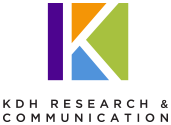This case study shows off our capabilities in Program Development.

When vaping hit in the United States, it hit hard. Youth vaping use has grown exponentially in recent years—reaching unprecedented rates for any substance—and its popularity and normalization has outpaced research on safety. A tremendous gap exists in public health education regarding the potential short- and long-term health effects of vaping. Schools and community-based organizations are on the front lines of prevention. These groups are eager for tools that can help.
In fall 2019, KDHRC proudly launched the AVOID prevention program—a discussion- and media-based youth vape toolkit that utilized all our program development prowess:
- Rigorous research and testing: AVOID’s evidence base is its super power. The program was built from accurate scientific information about vapes, vetted by the top experts in the field, and stress-tested by real-life educators and facilitators to ensure its teachability and youth engagement.
- Curriculum development: AVOID is anchored by videos and accompanying discussion guides designed to educate youth 12-16 years old on the potential risks associated with vape use. Community-based youth-serving organizations and schools can use AVOID to build knowledge, heighten perceived risk, promote anti-vaping attitudes, and decrease intentions to use vapes. The web-based platform helps instructors with little to no prevention background facilitate group discussions with teens about vaping facts and risks and capture simple data on class performance. Virtual and in-person focus groups held with youth throughout AVOID’s development ensured that the curriculum’s content was accessible and engaging.
- Video production: Brief, informative, and humorous educational videos feature a teen talking about why other teens should avoid vapes, offering a peer-to-peer resource and keeping the audience engaged.
- Web-development: AVOID is delivered through a comprehensive web-based platform that allows teachers to fully implement the program online, track student test schools, aggregate results across classes, and report de-identified youth knowledge change up to the superintendent and even the district level.
We leverage digital and traditional media to raise awareness of AVOID as a commercially available resource. In our marketing, we emphasize that ongoing technical assistance is available, both in the technical implementation of the program, as well as more advanced initiatives like behavior change evaluation.
- A multi-component evaluation demonstrated AVOID’s impact on youth – greater knowledge, more protective attitudes, and fewer intentions to vape in the future.
- In a controlled experimental study, we found significant, predictive relationships between survey participants’ exposure to the AVOID prototype and changes in knowledge about vaping, their understanding of the harmful risks of vaping, and their intentions to avoid vaping, even when controlling for demographic and psychosocial characteristics.
- Furthermore, we found positive though insignificant effects of exposure on changes in survey participants’ protective attitudes toward vaping and self-efficacy to avoid vaping.
- In short, students walked away from their exposure to AVOID’s key prevention messages with protective cognitive structures that theoretically predict their future avoidance of vaping.
You can view our complete findings here.
